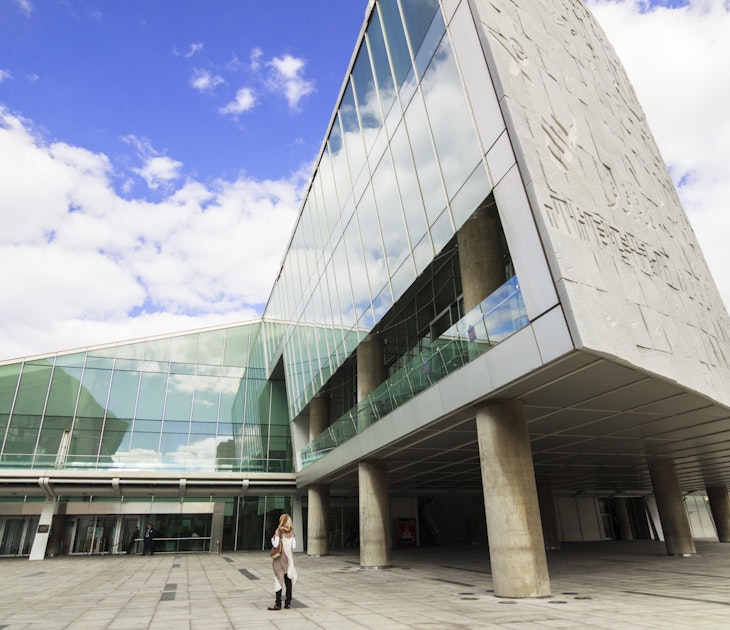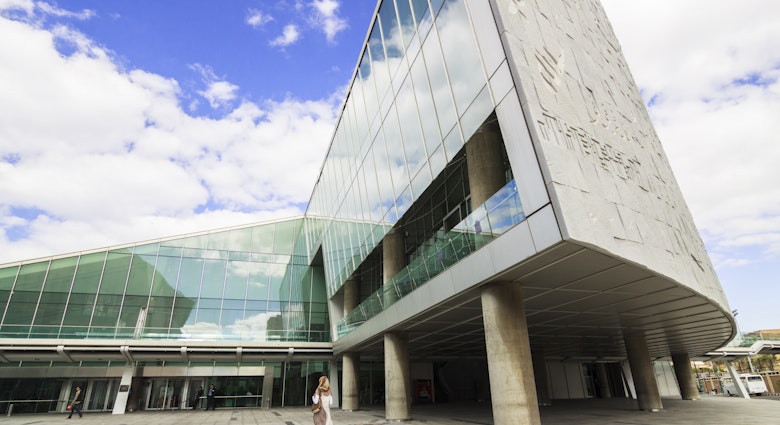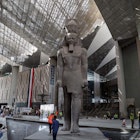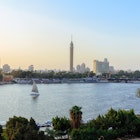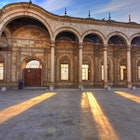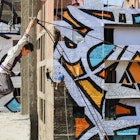'Do you have a strong heart?' asked the man behind the Egyptian Museum’s bookshop counter. 'You need one here…'
'Yes, yes, I think so', I said, nodding earnestly.
I assumed we were about to segue from a conversation about the museum’s layout to talk of the challenges facing Cairo after the 2011 revolution. Tourism, on which many livelihoods depend, hit rock bottom in the aftermath and is only now starting to slowly tick up again, but political tensions are still high. Every Egyptian I’d met over the past few days had been keen to share their thoughts on the immense strain the city is under. People say they’re exhausted. That the daily grind of traffic congestion is the worst it’s ever been. It’s dusty, dirty and noisy – not an easy place to travel, let alone to live.

The man dropped his voice to a whisper, so I leaned in to catch what he was saying: '…because if you go to see the mummies today, then one day soon, you will feel a tap on your shoulder. They will say: “You have visited us – now we are visiting yoooooou!”' He tried to lift his arms up, walking-dead style, but was laughing too hard to manage it, collapsing on the counter in hysterics instead. As I walked towards the stairs, he hooted after me: 'Be very careful!'
Cairenes might have had a rough time of it lately, but you certainly can’t accuse them of losing their sense of humour.
The Egyptian Museum faces Tahrir Sq, the focal point of the country’s revolution – the scene at various times of occupations, peaceful demonstrations and violent clashes since the anti-government movement of 2011. The taxi driver who dropped me off told me he’d camped there overnight himself, joining thousands of others to oust the then-leader Mohamed Morsi.

Many who followed news of the revolution from overseas have only ever seen pictures of Tahrir Sq in uproar, but for Cairenes, the square as it is now is the norm: an uneventful roundabout with a constant din of traffic, occasionally broken by the Omar Makram Mosque’s call to prayer.
There are a few reminders of turmoil, such as the revolutionary art covering the walls of nearby Mohamed Mahmoud St. Some paintings depict soldiers surrounded by skulls, others show elderly, abaya-clad women weeping over pictures of young men.

The exhibition halls of the Egyptian Museum, the soon-to-be-replaced home of world-class ancient artefacts – statues of pharaohs, stone sphinxes, the solid gold death mask of Tutankhamun, a beautiful but unfinished bust of Nefertiti, animal mummies, dramatic jewellery recovered from tombs – had a trickle of tour groups inside. Once upon a time, you had to jostle through crowds for a mere glimpse of these pieces. The Egyptian Museum is terribly lit and the information cards so cursory that they read more like storage labels. (Forgive the plug, but your Lonely Planet Egypt guide is invaluable here, containing heaps of info to help make sense of it all.)

The experience at the Pyramids of Giza the previous day was similar. It was far from lonely, as there were about as many would-be guides and touts selling horse rides as there were tourists, meaning intense levels of hassle. Once I’d fended off the hawkers, however, I was rewarded with an uninterrupted view of the three major pyramids. The sky was bright blue, soft clouds floated by those imagination-defying yellow points, and, except for the tour bus that pulled through every now and then, the site was quiet. It occurred to me that while millions of tourists have stood on these paths over the years, few can have had the privilege of an almost solitary visit.
But even this couldn’t top the thrill that was in store at the Egyptian Museum. The bookseller had guessed right – I was mostly there to see the Royal Mummies. Isn't everyone, really? I rushed towards Room 46, then stopped short at the door, overcome by an irrational twinge of nerves. Besides the lone guard, there wasn’t a soul around – inside, it was just me and some of the ancient world’s most famous pharaohs and queens. Ramses III, IV and V lay in their glass cases, with Queens Tiy, Henettawy, Nesikhonsu, Nedjmet, Maatkare and a mummified pet baboon close by.

I walked among their bodies, forcing myself to peer right over the glass caskets and stare at their shrivelled black fingertips, gaunt cheekbones, broken teeth and curls of hair. Every now and again my reflection would catch the glass unexpectedly, and I’d spin round, wondering where the movement had come from. In the end it wasn’t a tap on the shoulder that did me in, but a deathly glance from Queen Maatkare, whose wide open eyes may have been made of stone but were much too lifelike for comfort. I bolted, practically delirious with adrenaline.
There are a million reasons to visit Egypt right now and some not to. The UK's Foreign and Commonwealth Office (FCO) does not currently advise against travel to Cairo but does recommend that travellers take particular care in areas with a history of regular protests or visiting crowded places during religious festivals. As recently as December 2017, a gunman opened fire at a Coptic church, killing 11 and injuring 10 more. November's attack on a Sufi mosque in El Arish, Egypt's deadliest, understandably horrified potential visitors to the country, but it took place in North Sinai – a different land mass entirely and an area that's been off-limits to travellers for years.
Cairo is a volatile place, and it is likely that there will be more flare-ups in future.
It’s true that the high-octane chaos of Egypt’s capital can be overwhelming too, but it’s also utterly exhilarating – and as everyone knows, the best travel moments don’t get handed to you on a plate. Just make sure your heart’s strong enough for an encounter with Ramses III and co.
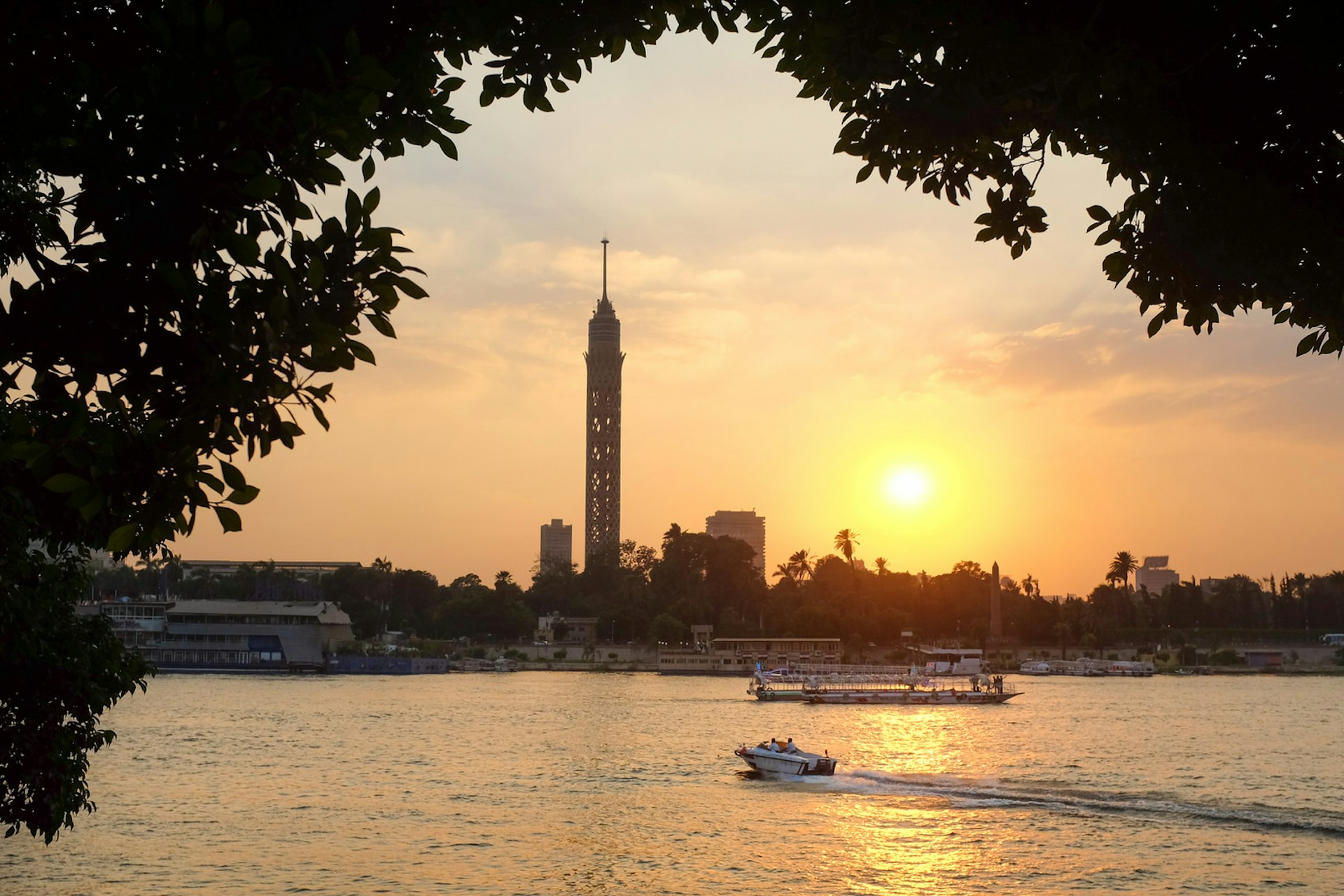
Travelling to Egypt? Here’s the latest travel advice on the country's main tourist areas
Cairo and Alexandria
Most of the clashes and anti-government demonstrations have taken place in these cities, particularly the capital. Travellers are advised to avoid religious buildings and festivals, and areas with a history of protests, and to leave the area if a demonstration begins. No violence has been deliberately targeted towards tourists, and there is no FCO advice against travel here.
Luxor to Aswan
Cruises run regularly along this stretch of the Nile, with passengers disembarking to visit nearby areas of interest such as the Valley of the Kings, the temples of Karnak and Luxor, Kom Ombo and Edfu. There have been no terrorist incidents here since 1997, and there is no FCO advice against travel here.
South Sinai
After departing from Sharm El Sheikh's airport in November 2015, a Russian passenger jet crashed, killing all 224 people on board, in a bombing later claimed by Isis. Since then, the FCO advises against all but essential travel by air to Sharm El Sheikh, meaning that direct flights from the UK have been cut off. There are no warnings against visiting Sharm El Sheikh itself, but the FCO does caution against all but essential travel to all other parts of South Sinai, including Taba, St Catherine’s Monastery, Dahab and Nuweiba, as tourists have been targets in previous terrorist attacks.
Helen Elfer travelled to Egypt with support from EgyptAir. Lonely Planet contributors do not accept freebies in exchange for positive coverage.
Last updated February 2018

